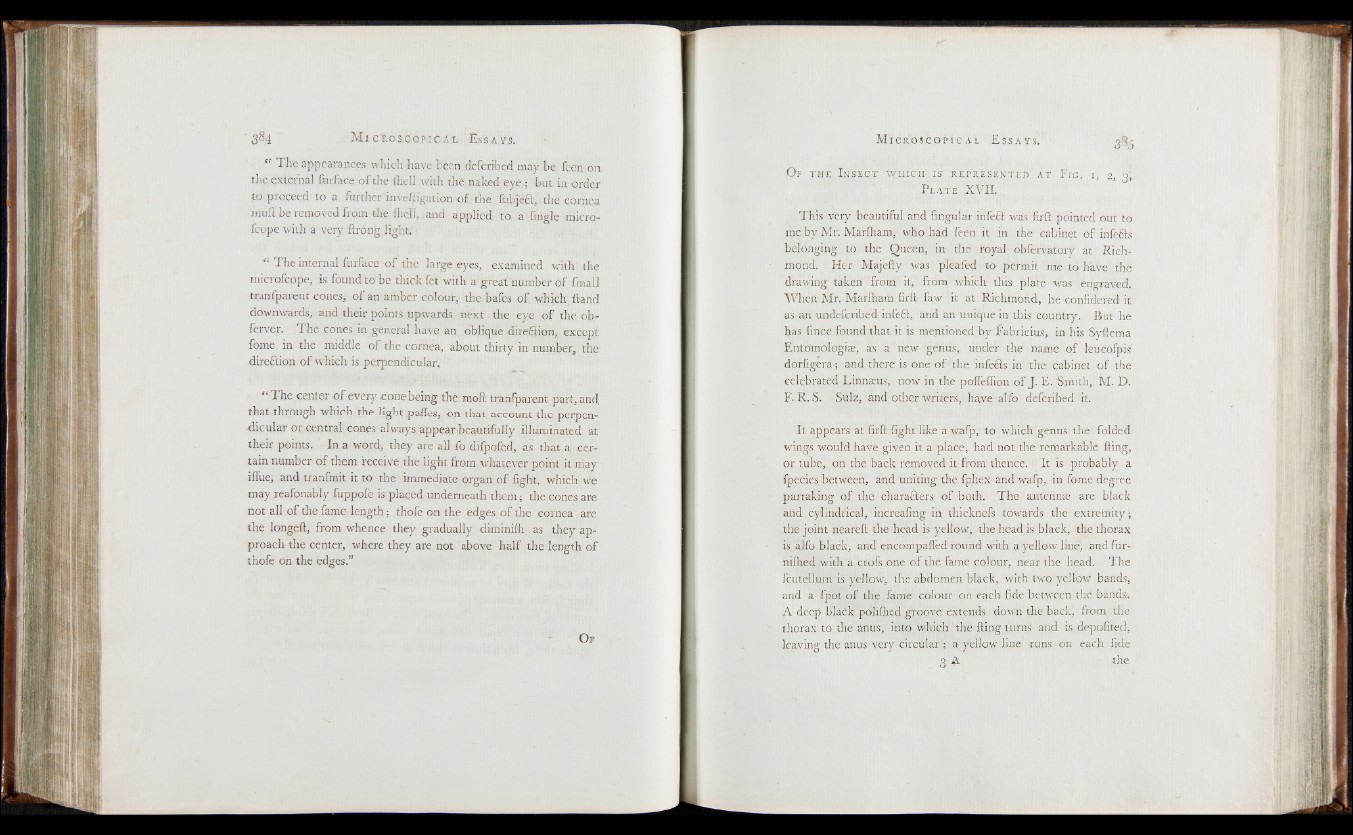
3§ 4 MiCRos .copicAi Essays.
“ The appearances which have been defcribed may be feen on
the external furface ofthe.fhell with the naked eye.-; but in order
to proceed to a further mve/ligation o f the fubject, the cornea
mull be removed from the fhell,, and applied to a fingle micro-
fcope with a very ftrong light.
“ The internal furface o f the large eyes, examined with the
microfcope, is found to be thick fet with a great number o f fmall
tranfparent cones, o f an amber colour, the bafes of which hand
downwards, and their points upwards next the eye o f the ob-
ferver. The cones in general have an oblique direction, except
fome in the middle o f the cornea, about thirty in number, the
diredion o f which is perpendicular.
“ The center o f every cone being the moft tranfparent part, and.
that through which the light paffes, on that account the perpendicular
or central cones always appear beautifully illuminated at
their points. In a word, they are all fo difpofed, as that a certain
number o f them receive the light from whatever point it may
iffue, and tranfmit it to the immediate organ of fight, which we
may reafonably fuppofe is placed underneath them; the cones are
not all o f the fame length; thofe on the edges o f the cornea are
the longeft, from whence they gradually diminifh as they approach
the center, where they are not above half the length of
thofe on the edges.”
O f
This very beautiful and Angular infed was firft pointed out to
me b y Mr. Marlham, who had feen it in the cabinet of infeds
belonging to the Queen, in the royal obfervatory at Richmond.
Her Majefty was pleafed to permit me to have the
drawing taken from it, from which this plate was engraved.
When Mr. Marlham firft faw it at Richmond, he confidered it
as an undefcribed infed, and an unique in this country. But he
has fince found that it is mentioned by Fabricius, in his Syftema
Entomologie, as a new genus, under the name o f leucofpis
dorfigera; and there is one o f the infeds in the cabinet of the
celebrated Linnaeus, now in the poffeffion o f J. E. Smith, M. D.
F- R. S. Sulz, and other writers, have alfo defcribed it.
It appears at firft fight like a wafp, to which genus the folded
wings would have given it a place, had not the remarkable fling,
or tube, on the back removed it from thence. It is probably a
fpecies between, and uniting the fphex and wafp, in fome degree
partaking of the charaders o f both. The antennae are black
and cylindrical, increafing in thicknefs towards the extremity;
the joint neareft the head is yellow, the head is black, the thorax
is alfo black, and encompaffed round with a yellow line, and fur-
nilhed with a crofs one o f the fame colour, near the head. The
fcutellum is yellow, the abdomen black, with two yellow bands,
and a fpot of the fame colour on each fide between the bands,
A deep black polifhed groove extends down the back, from the
thorax to the anus, into which the fting turns and is depofited,
leaving the anus very circular; a yellow line runs on each fide
3 A the